I turned my smartphone into a thermal imaging camera with the InfiRay P2 Pro
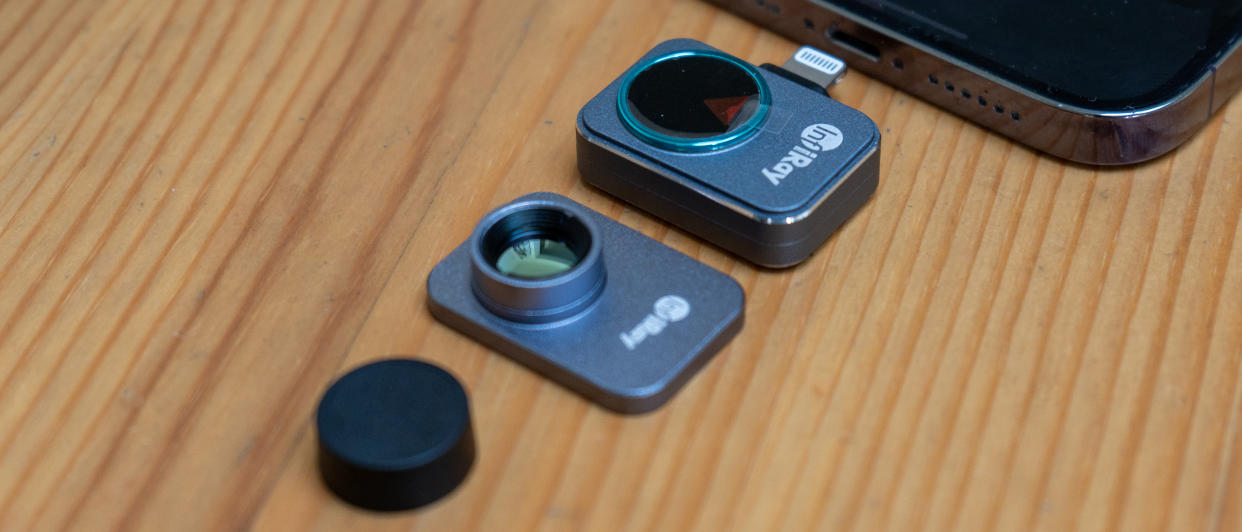
The market for thermal cameras has grown since their use in DIY tasks – as well as professional motor engineering, electrical, HVAC, and plumbing – became so apparent, and their cost more affordable. There are several kinds, but one of the cheapest to own is the phone attachment, which can take advantage of the screen and processing power of your phone. This fits into that category and, while it might not seem rugged enough for a busy workshop, for many it's just the right approach.
We keep a guide of the best thermal cameras (spoiler: this is going to be added at the next update) so you can check if there is a design more appropriate to your purpose. The version I'm testing is the InfiRay P2 Pro and Magnetic Macro Lens bundle, but it is available for less without the lens attachment, so check what you need.

Specifications
Thermal resolution: 256 x 192 (49,152 pixels)
Thermal range: -20˚C to 550˚C (-4˚F to 1022˚F)
Refresh rate: 25Hz
Field of view: 56˚ × 42.2˚
Accuracy: ±2°C or ±2% (whichever greater)
Storage: n/a
Connectivity: Lightning or USB-C options
Size: 27 × 18 × 9.8mm (1.1 × 0.7 × 0.4 in)
Weight: 9g (0.02lbs)
Key Features

As mentioned, the design itself is the stand out feature of this device. The fact its weight is less than half that of a AA battery and it it's the size of a thumb tip is unarguably impressive. Other significant features are the refresh rate which, at 25Hz, is higher than many thermal cameras which are limited to 9Hz and, as a result, are quite juddery in use.
Speaking of, you can capture video as well, plus the app has an extensive range of options including a Professional Thermometry mode which allows you to take live measurements within defined areas, or lock to specific temperature ranges. Images and clips are, of course, recorded to your phone.
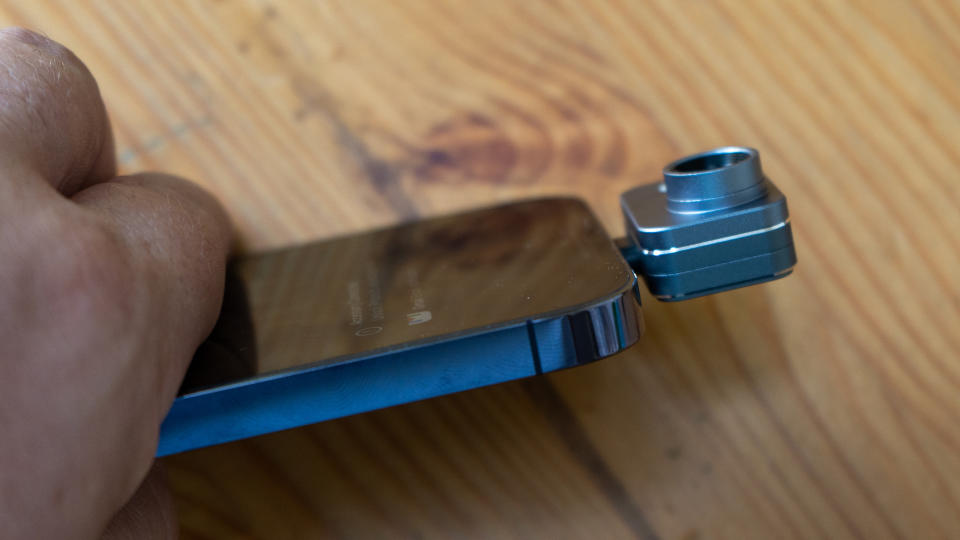
Build and handling
Opening the box reveals the device and, if you opted to get it, the macro adapter next to each other in a felt-like padding. It feels very plush, though for a moment I found myself worrying that – while the macro adapter has a plastic lens cap, the main body does not. Opening the wallet revealed a small bag for exactly that purpose.
Nothing, of course, is that big and heavy, but that isn't to say that it doesn't feel good quality. The body of the camera is a magnesium alloy in space grey – it looks very at home next to a MacBook Pro – yet despite the tiny proportions InfiRay have managed to add a tiny chrome trim on the edge. The only aspect of doubt has to be the Lightning connector protruding from hard plastic at the top, or, er, bottom. The very smallness of this part, combined with the risk of accidentally using it as a lever point as you put the phone down, is a worry – the thermal camera costs more to replace even than an Apple own-brand charging cable!
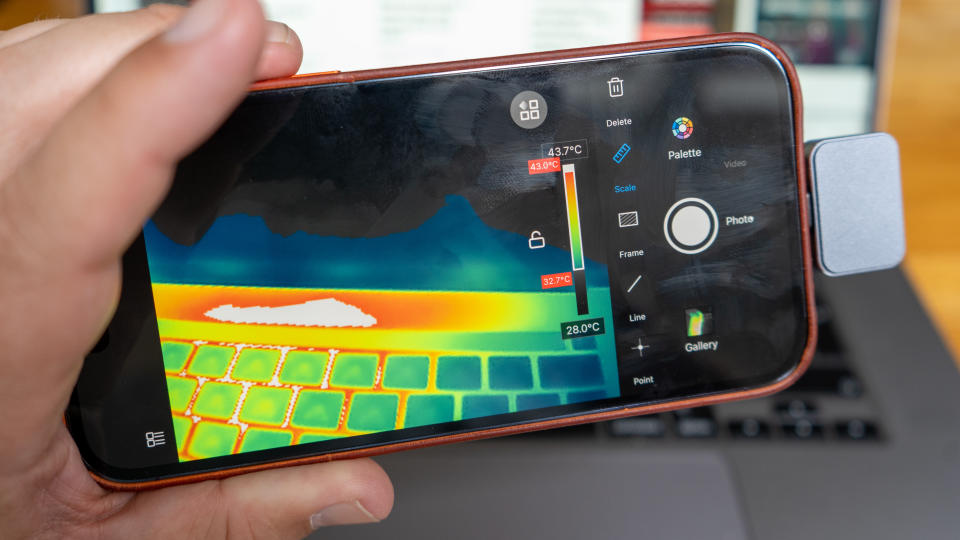
On connection to the phone, it automatically popped up a box inviting me to download and install the app from the App Store (I tested on an iPhone 14 Pro Max), and so I did. The app's first steps guided me through 5 pages of simple instructions before unleashing 'easy mode' on me, at which point I saw a thermal selfie. That was the first point I realized it'd matter which way around you plugged this Lightning port!
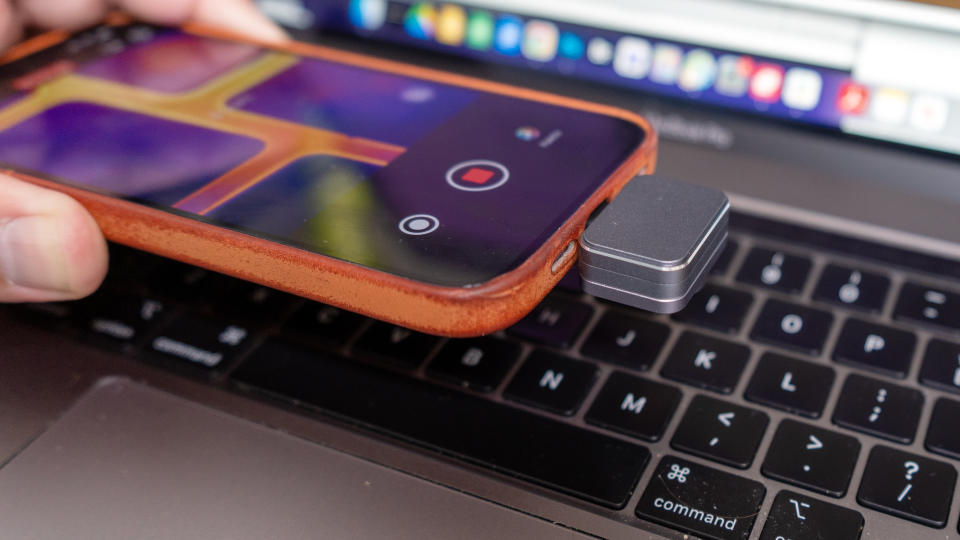
Performance
It is my practice to test thermal cameras on three things, heating, insulation, and tech. The fact spring has finally made it to the UK means the insulation test isn't as dramatic as it has been on other thermal cameras, but overall the device is responsive and the visual detail is good.
It is also snappier than some – I timed it as 9 seconds from a cold start (plugging in with the app running) to a functioning screen. I wish it didn't revert black and white, but the pallet option is right there.

The screenshots are saved as PNGs, so here are a selection in my preferred pallet. If you opt to show the optical camera you can, though it is simply overlaid and the lenses are a good distance apart.
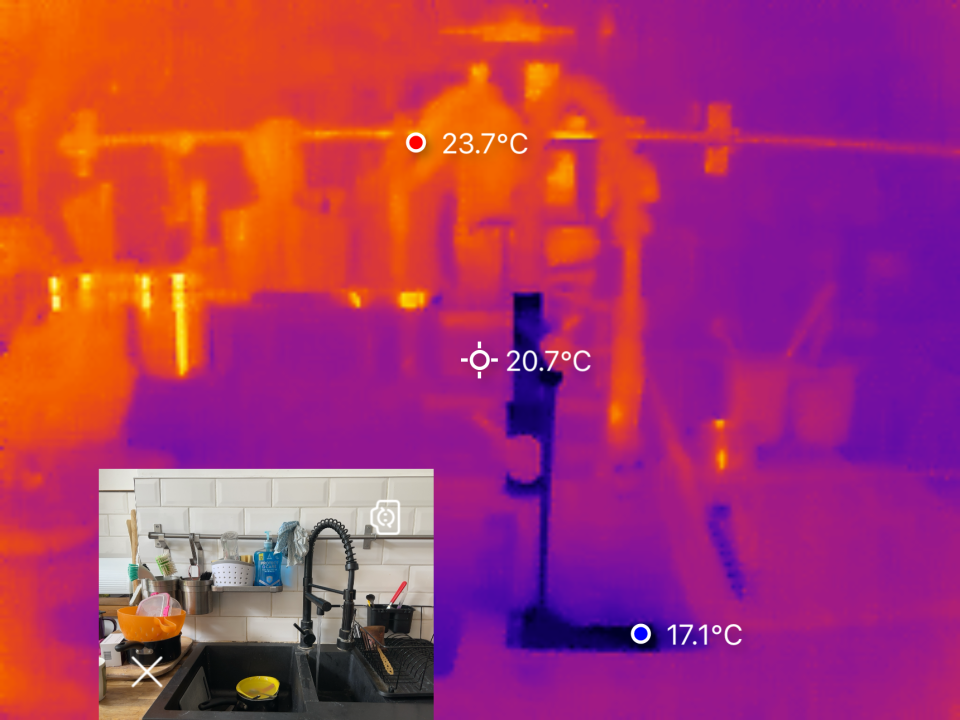
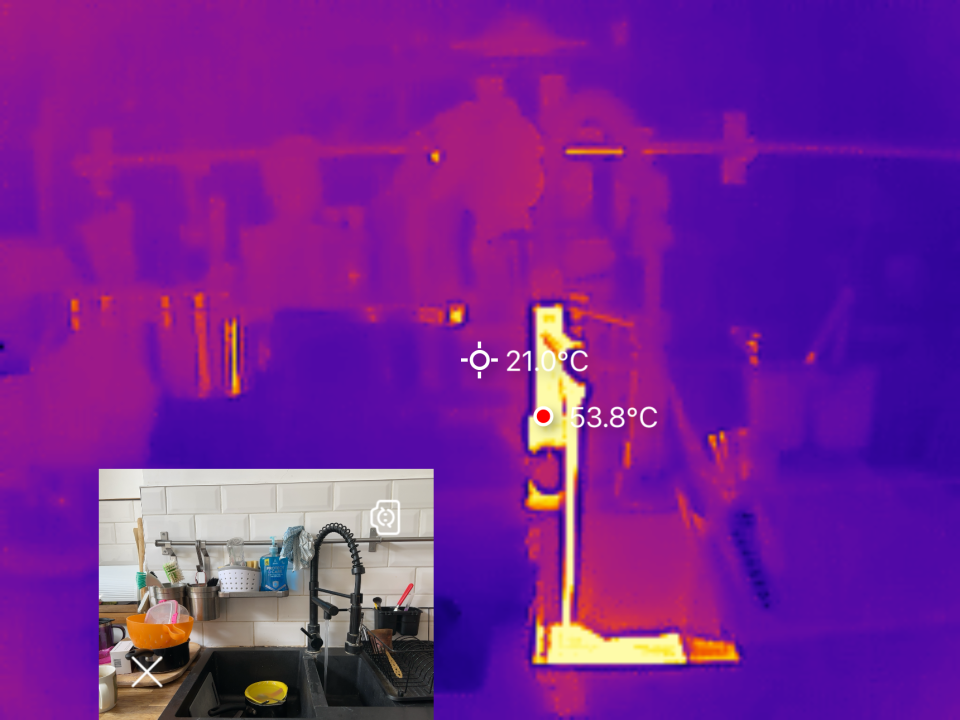
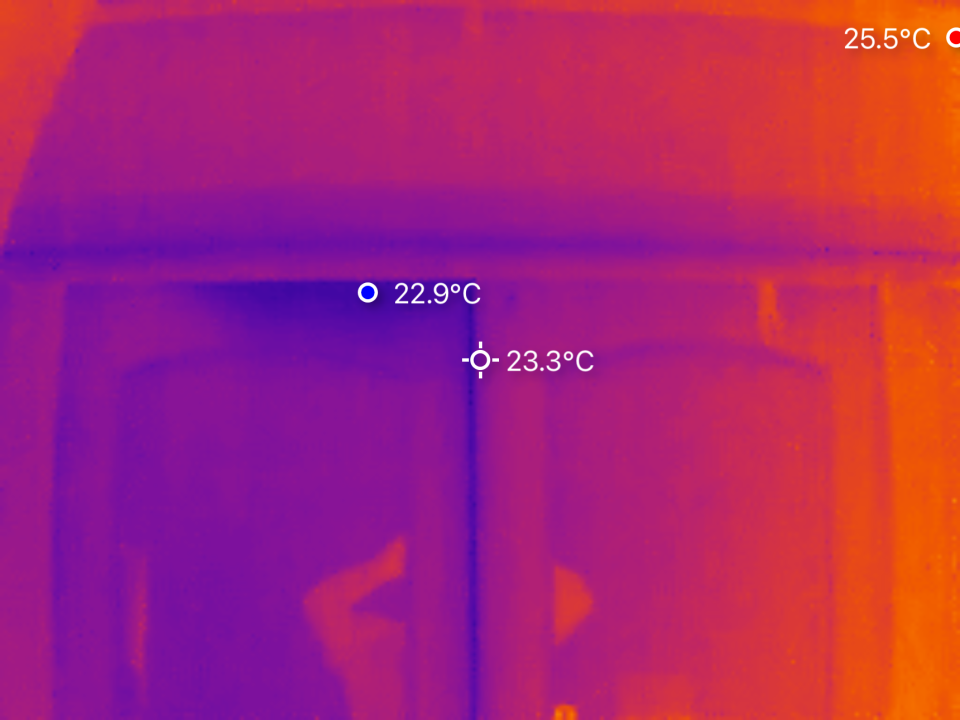
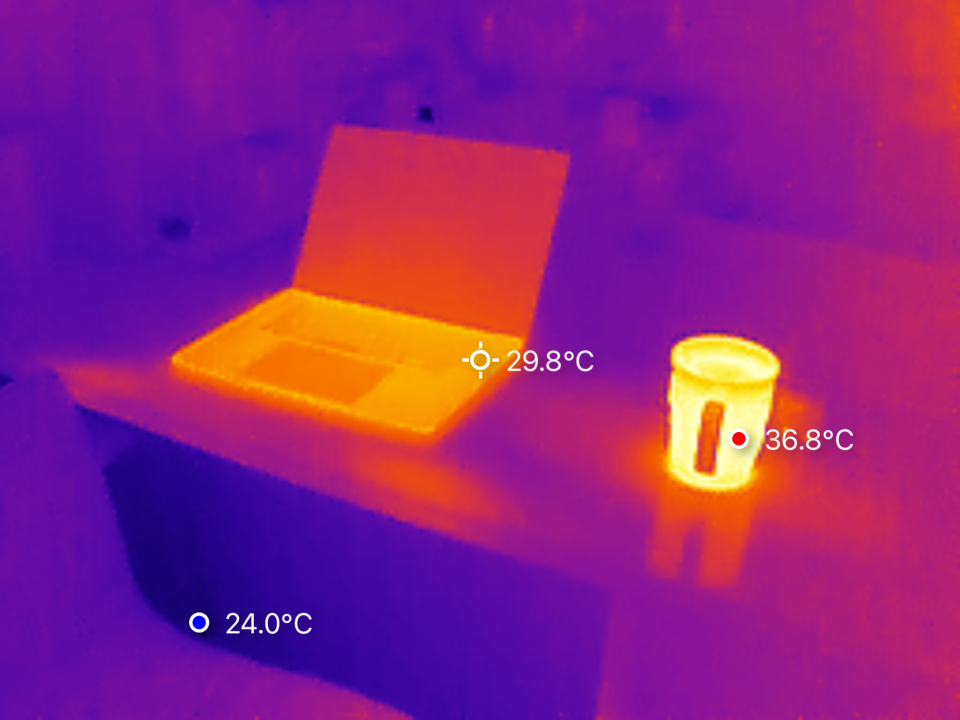
Some thermal cameras include an optical camera to either capture matching photos at the same time (to aid a report) or to create hybrid images, using edge contrast from the optical image to help identify things. That's a great technology, seen in great effect in the FLIR C5 or the FLIR One Edge Pro, though obviously it add cost and isn't always necessary.
InfiRay's solution can be a little awkward, however. As mentioned, the only way to save the image is as a postage stamp atop the original – not ideal. This looks extra weird since the app is smart enough to prepare a Word document report, with distance settings, but isn't able to capture two separate images.
Where it really falls down, however, is in macro mode. Since the camera lens and thermal attachment are at opposite ends of my iPhone – and most phones – the images are a long way short of lining up. It won't be much of an issue for most shots, but it'll have to be borne in mind if you're doing close-up electronics.
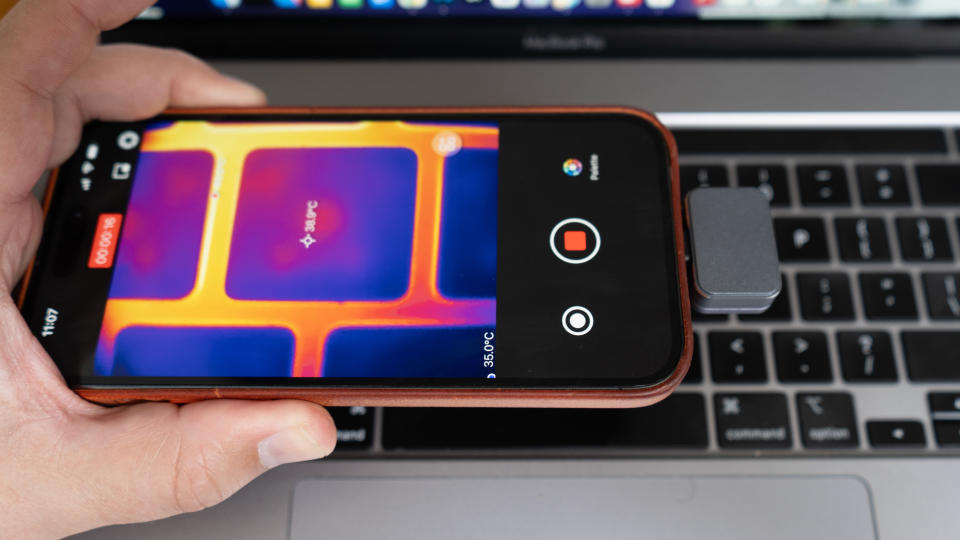
Verdict
This is a surprising and very useful tool at a competitive price, comfortably beating other phone attachment cameras while also being even more portable. For anyone with an occasional or on-the-road need for a thermal camera, it is an easy device for me to recommend, with top-notch thermal resolution and refresh rate.
There are a few worries, the main of which is whether the cable socket is strong enough to survive your applications. Heavy users might want to look to something more rugged, but for the average home user like me, with less frequent needs in situations I'll be happy to touch my phone, it's OK.
It works with the standard case, too, so no worries there. The other concern (especially true for close-up work) is the less-than-optimal use of the optical image from the phone's camera. There is no hybrid option, and the phone's camera is at the other end of the device so, in macro, the images don't really line up if you're using the side-by-side mode.
That's a shame as for the most part the app was very good, with everything generally well-designed and welcoming. I really appreciated the choice between Easy mode and Professional, so screen clutter was only necessary when needed but the detailed functions are still easily reached. As an aside, video-makes might also have fun with this camera thanks to the solid refresh rate – it has a surprising number of uses and it certainly won't weigh you down!
You might also be interested in:
• Best thermal-imaging cameras
• Best boroscopes and inspection cameras
• Best rugged phones

